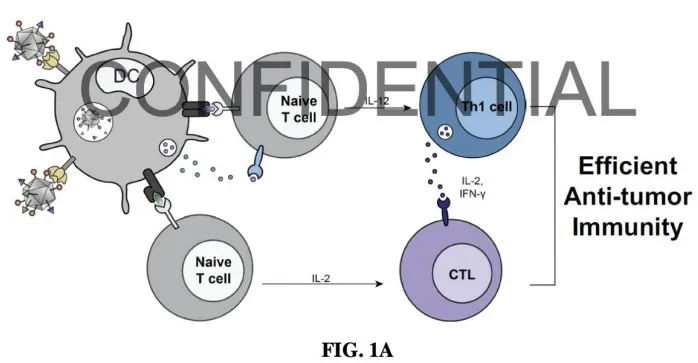Targeting Dendritic Cell Lectins with Glycosylated Particles Containing TLR Ligands Facilitates Efficient Immune Responses
This vaccine utilizes virus-like particles (VLPs) to selectively target and activate antigen-presenting cells (APCs) to stimulate antigen-specific immunity. This treatment is administered to subjects via injection and can be used to treat or prevent diseases such as cancer.
Researchers
-
compositions and methods for targeting dendritic cell lectins
Patent Cooperation Treaty | Published application
Figures
Technology
This vaccine leverages DCs, a kind of APC, as the primary initiators of anti-tumor immune responses due to their ability to activate tumor antigen-specific T-cells. Because T-cells cannot independently identify invading pathogens, cancer vaccines rely on priming T-cells to recognize and kill tumor antigens. The priming process utilizes the DCs to initiate and modulate the body’s immune response.
VLPs lack the components required for viral replication, yet they are capable of eliciting immune responses against antigens displayed on their surface. Additionally, lectins—carbohydrate-binding proteins situated on the DCs' surface—interact and bind with ligands on the VLP surface. The vaccination composition consists of a synthetic VLP engineered to display one or more antigens and a binding molecule intended to target the VLPs to lectins on the surface of DCs. Once administered to the subject, VLPs are rapidly internalized by DCs. At that point, the antigens on the VLP are presented to T-cells, subsequently activating them and inducing appropriate immune cell proliferation to combat the invading pathogen.
Problem Addressed
Current approaches to cancer vaccinations are often limited by a lack of rapid production capability due to complex engineering parameters. Furthermore, peptide antigens used in vaccines often fail to induce a sufficient immune response without additional substances to promote immunogenicity. Consequently, these methods are most useful as laboratory screening tools and lack applicability as effective treatment options. This development overcomes these limitations by utilizing functionalized virus-like particles (VLPs) as a delivery mechanism for peptide antigens and by harnessing lectins displayed on the surface of the dendritic cells (DCs) to direct and induce immunity within the subject. Research shows that DC lectin targeting successfully induces cell-mediated immune responses involving antigen-specific T cell priming.
Advantages
- VLPs efficiently drive proliferation of antigen specific T-cells against an endogenous tumor antigen.
- VLPs typically deliver antigens more effectively than the same antigen would when presented alone.
- This composition is compatible with many antigens including those derived from a virus, bacteria, parasite, allergen, or tumor.
- VLPs can display two or more antigens, which can direct either the same or different immune responses in a subject.
- VLPs are highly adaptable, can act as hosts to other molecular interactions, and possess high biocompatibility with other components of the treatment.
Publications
- Alam, Mohammad Murshid, Cassie M. Jarvis, Robert Hincapie, Craig S. McKay, Jiri Schimer, Carlos A. Sanhueza, Ke Xu, Roger C. Diehl, M. G. Finn, and Laura L. Kiessling. 2021. "Title of the Article." ACS Nano 15 (1): 309-321. https://doi.org/10.1021/acsnano.0c03023.
License this technology
Interested in this technology? Connect with our experienced licensing team to initiate the process.
Sign up for technology updates
Sign up now to receive the latest updates on cutting-edge technologies and innovations.
